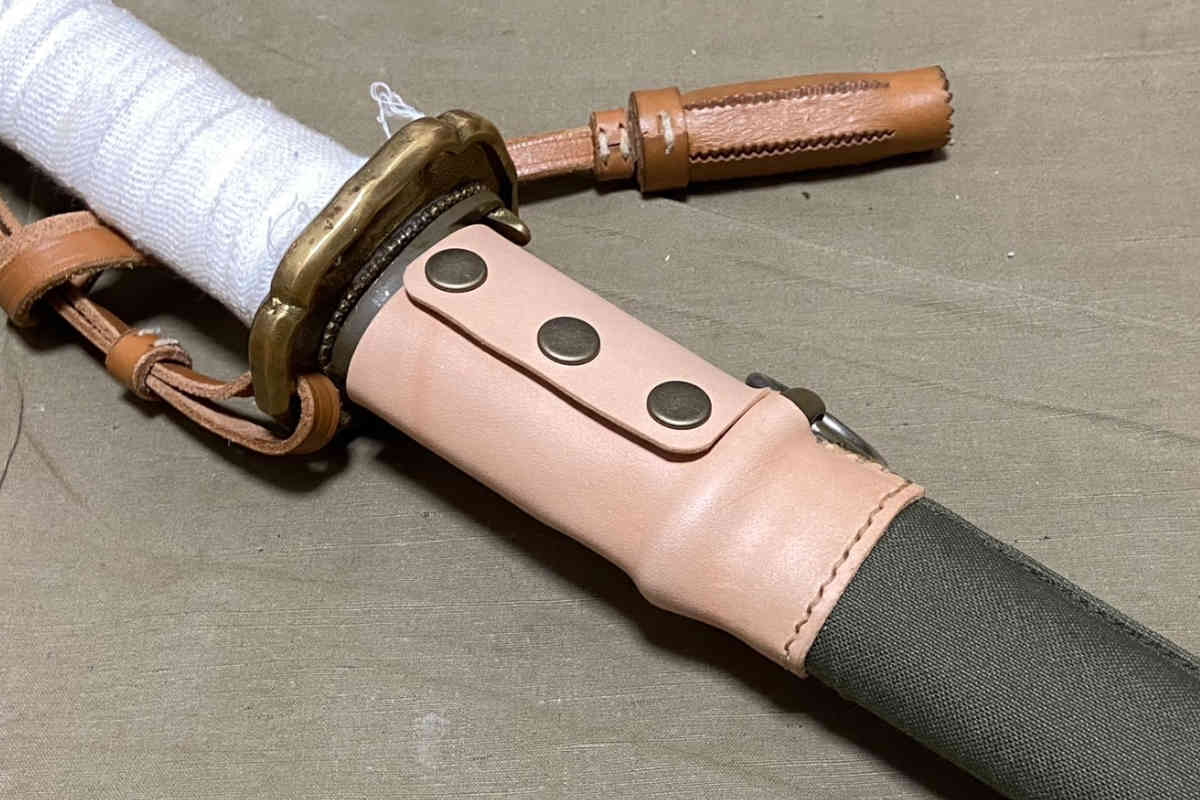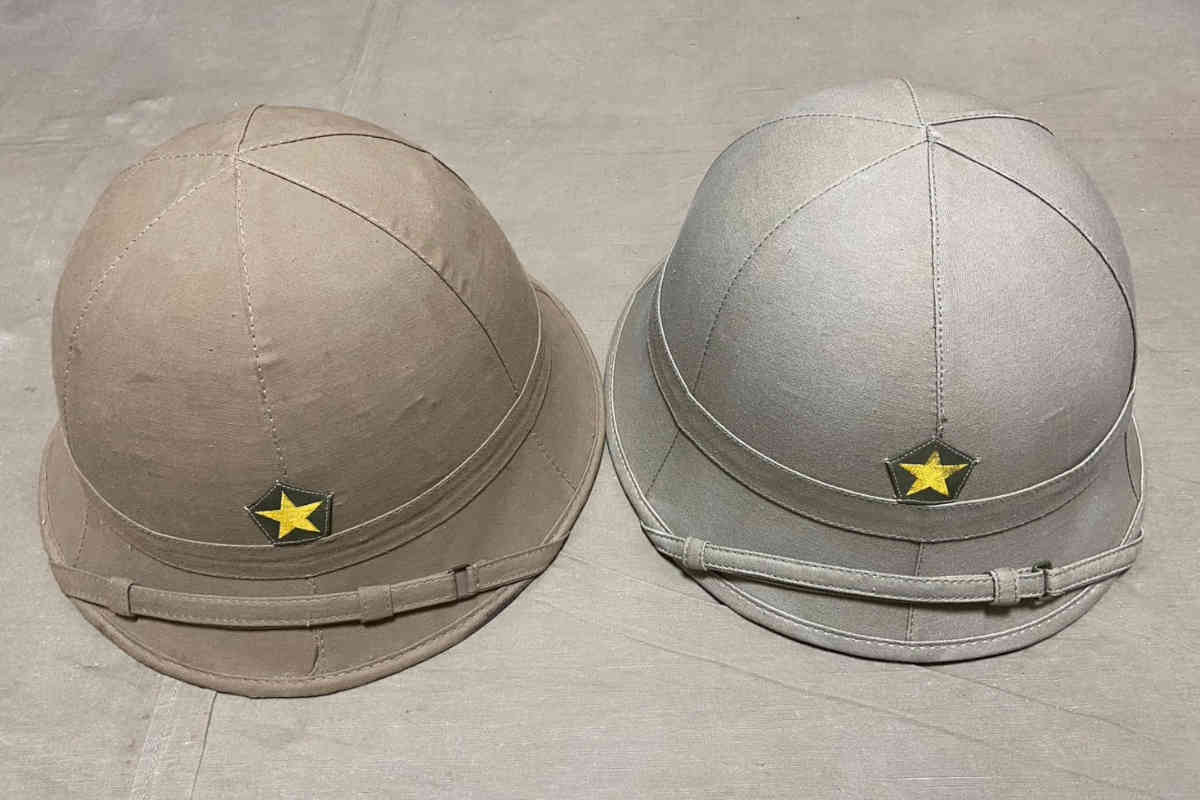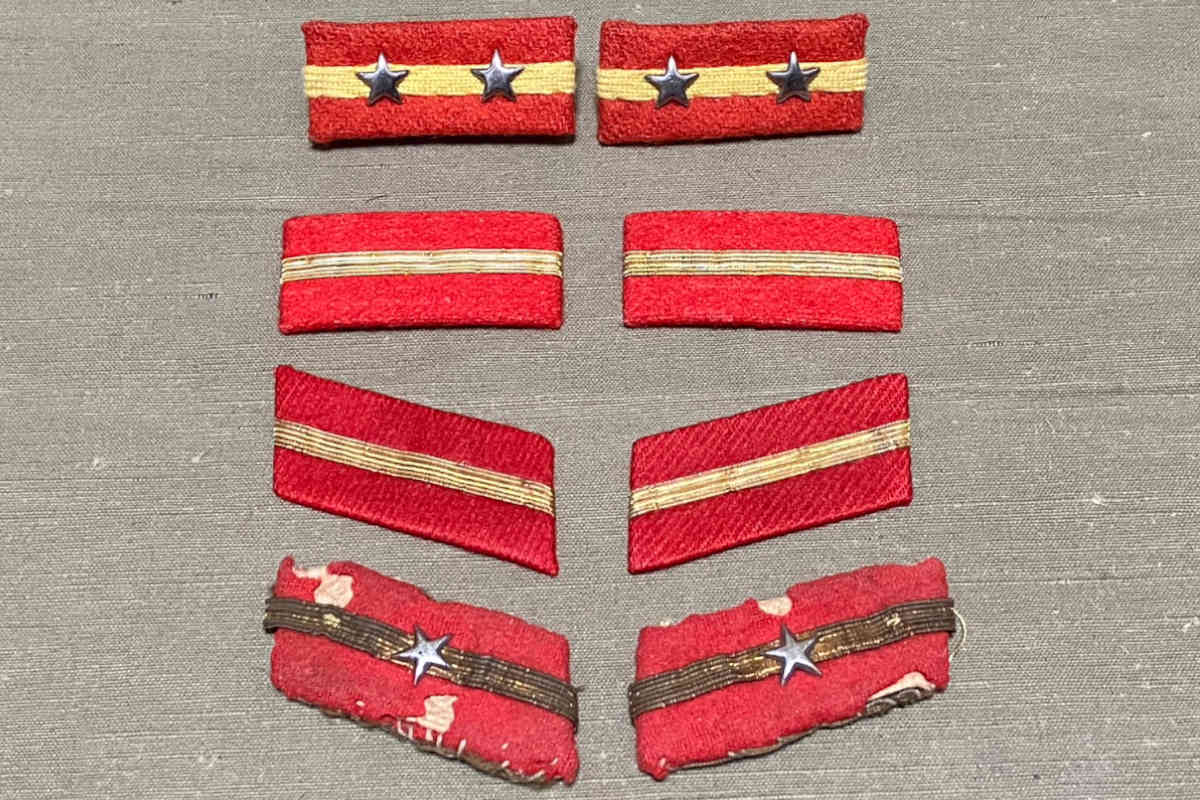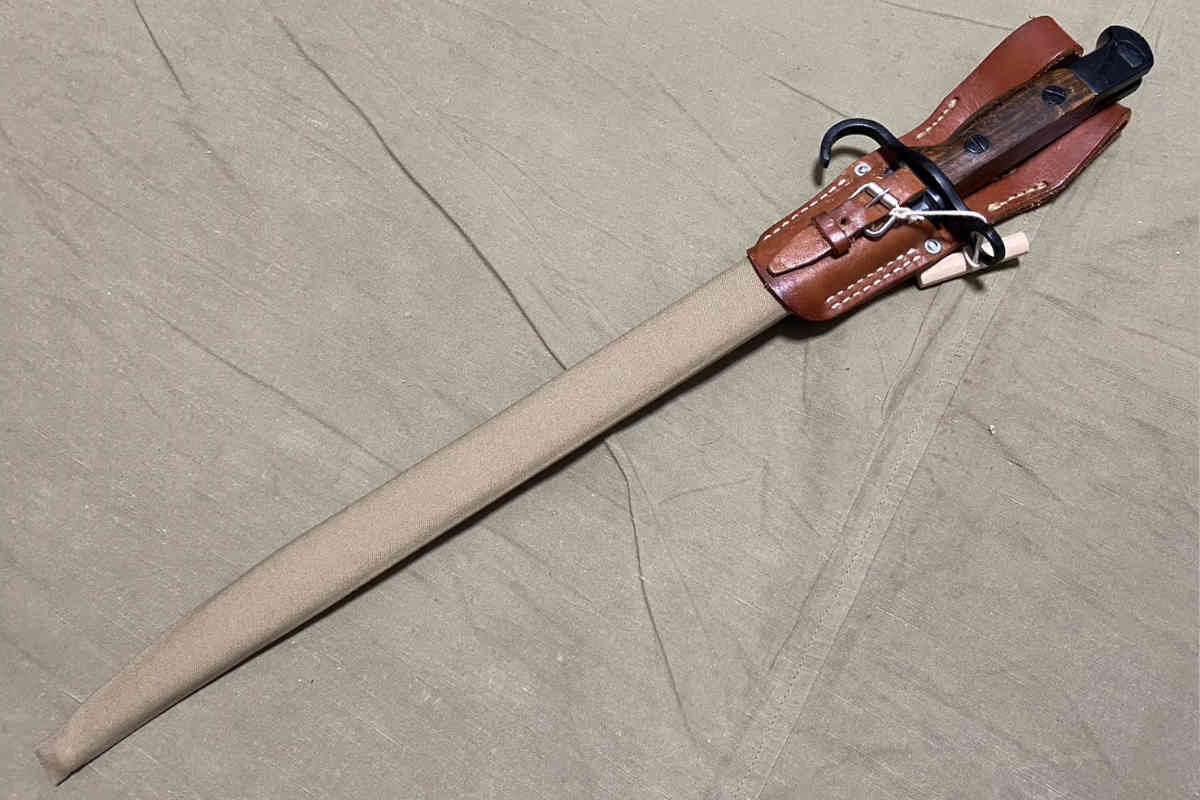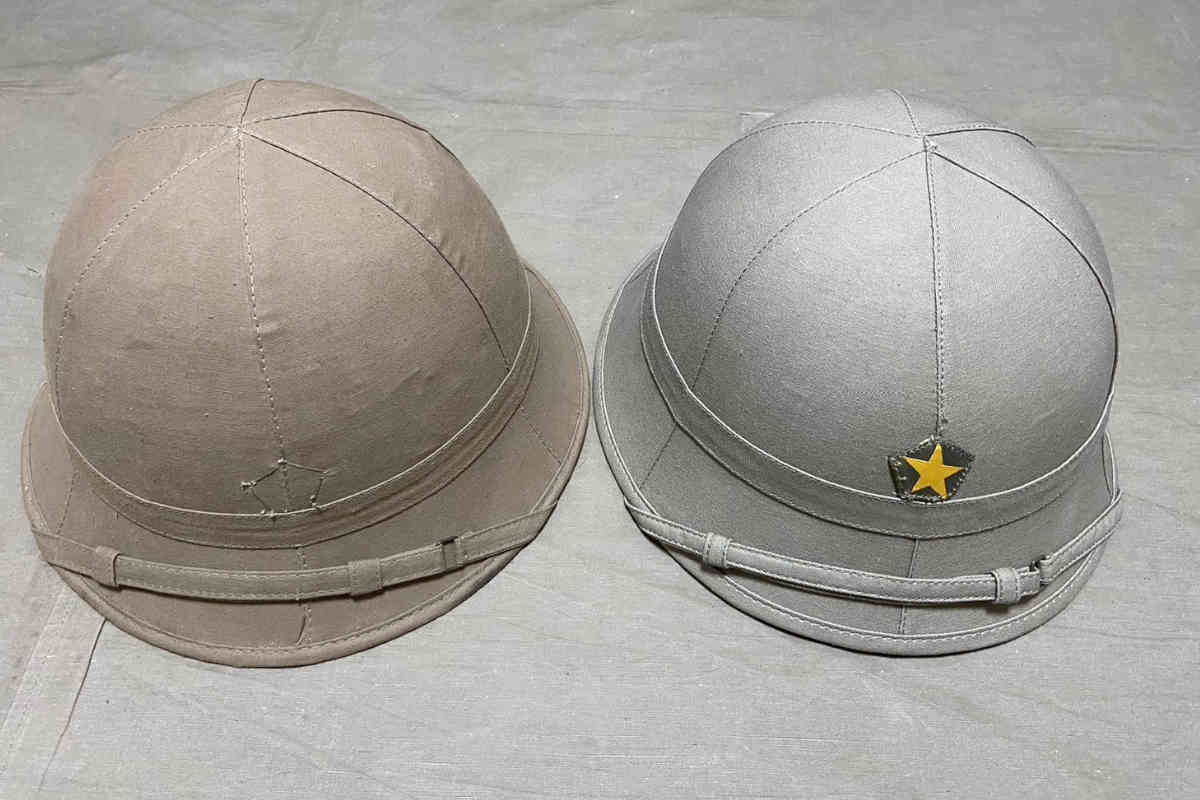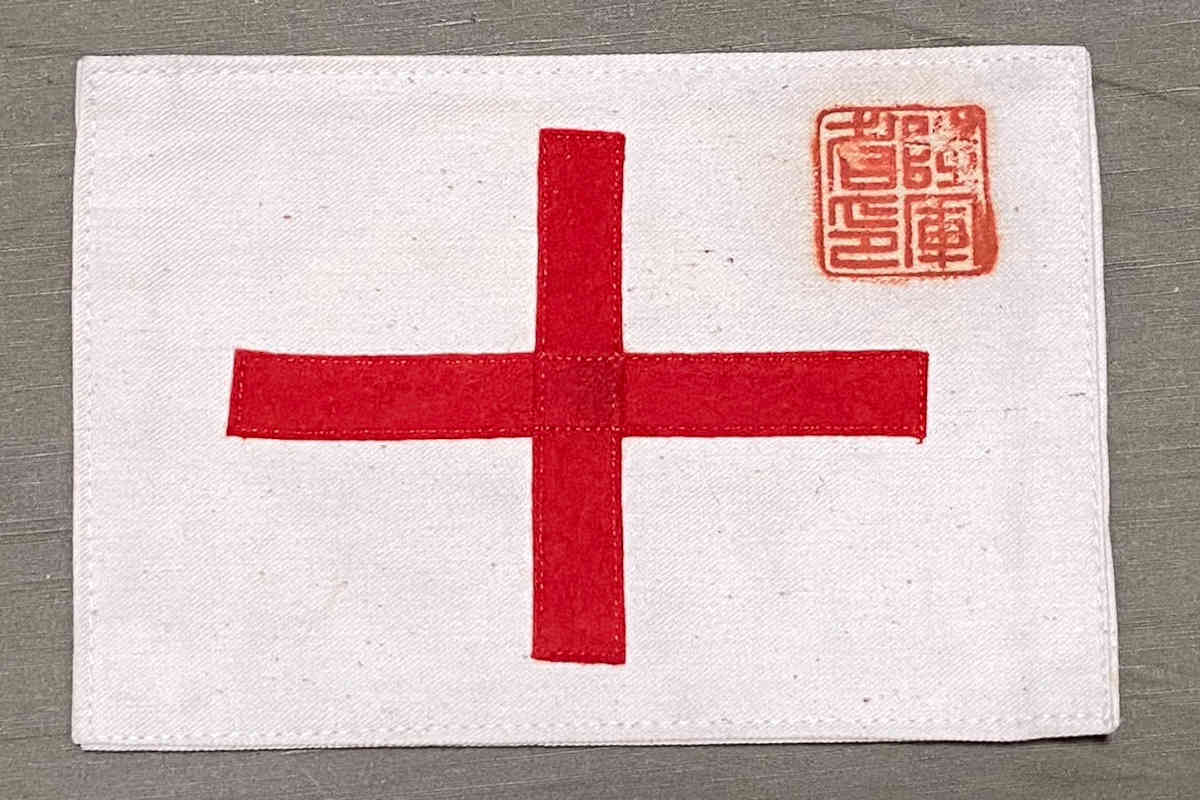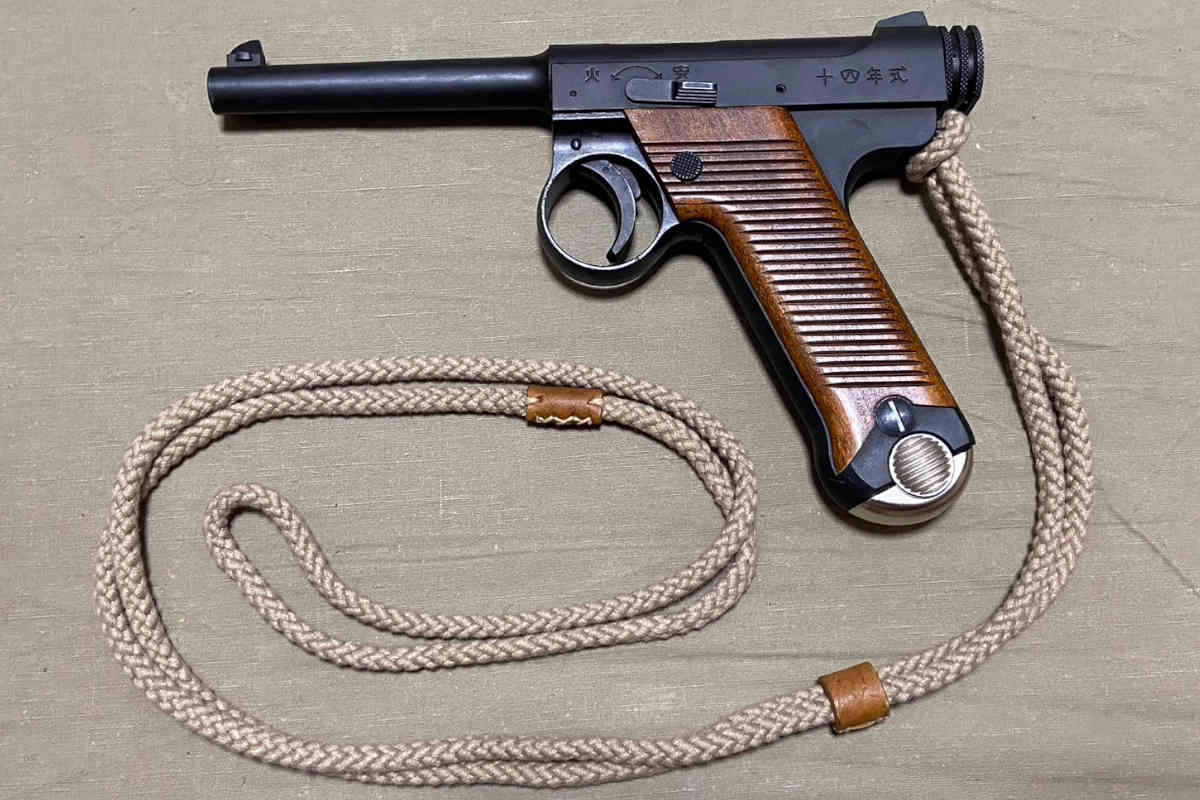Introduce the attire of the Imperial Japanese Army, which encompasses not only uniforms such as military clothing but also personal equipment such as canteens, mess kits, backpacks, and footwear.
The Type 95 sword was a regulation-issue military sword used by non-commissioned officers and soldiers of the Imperial Japanese Army who were required to wear swords, such as cavalry, military police and transport corps. Although I don’t own an original Type 95 sword, I do have a replica made by PK Militaria. Even as a replica, it is quite expensive. After wearing it during outdoor games, the scabbard ended up covered in scratches. I had…
I added authentic woven star insignia to both the authentic Type 98 sun hat and the HIKISHOP replica that I introduced in my recent article. While I was at it, I also made some detailing enhancements to the HIKISHOP replica Processing the Woven Star Insignia Here is the authentic woven star insignia that I used. In my case, I happened to find it listed with an incorrect title on Yahoo Auctions, allowing me to acquire…
This time, I would like to introduce the changes in rank insignias and identification Insignias worn on the Type 98 military uniform established in Showa 13. When aiming to accurately reproduce past military attire, the specific year and month is an important factor. It is crucial to understand when the new regulations were implemented if one is to wear military attire according to the revised standards; otherwise, it may result in a uniform that does…
In this article, I’d like to introduce some detail-up techniques for military gear that even beginners can try. While it may require a bit of sewing skill, you can easily make these using materials you have on hand, so give it a shot! Collar Cloth A “collar cloth” (Eri-fu/襟布) refers to the fabric sewn onto the collar of a military uniform to prevent it from getting dirty. It’s the same concept as the collar protectors…
This time, I'm comparing the Type 98 Sun Hat with the HIKISHOP replica. The authentic Type 98 Sun Hats occasionally appear on Yahoo Auctions, usually trading for around 30,000 to 50,000 yen. The Sun Hat has early and late models. The version established in 1930 (Showa 5)1 featured a metal star insignia and had ventilation holes at the top and on both sides. The one I'm introducing this time is the Sun Hat revised in…
I have obtained an authentic Red Cross Patch that medics and military nurses wore on their left arm. The easiest replica of the Red Cross Patch to obtain is the one from HIKISHOP. In this article, I would like to summarize the evolution of the Red Cross Patch and provide a comparison between an authentic Red Cross Patch and the HIKISHOP replica. The Evolution of the Red Cross Armband Meiji 41 (1908) Established Red Cross…
A lanyard used to suspend a pistol is called a "Kenchu" (懸紐). While many replicas of kenchu are available for purchase, none of them felt quite right to me, so I decided to make one myself. Here is a photo of the completed piece, right off the bat. I used 100% Japanese-made cotton braided cord, and the leather parts are made of cowhide. Some overseas replicas use synthetic leather, which doesn't have the same quality…
